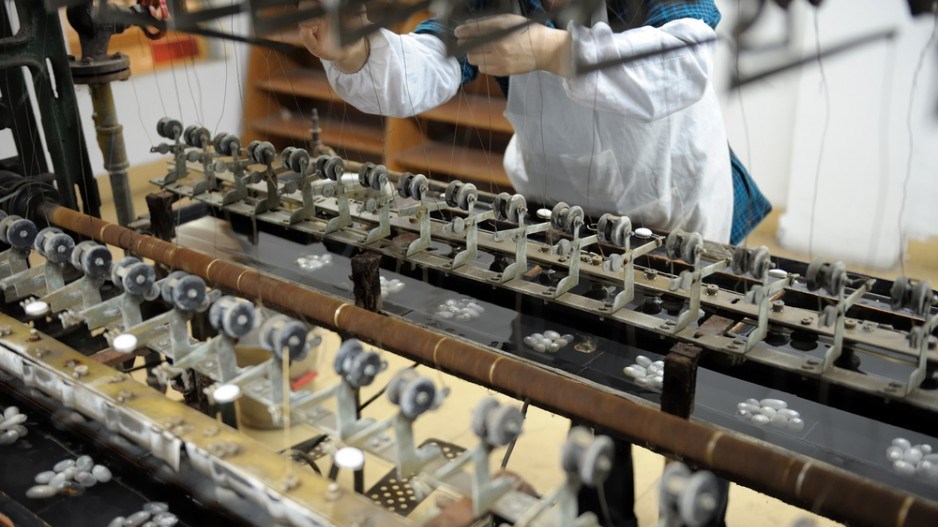If there has been one industry that has struggled in the past decade, it's the province's manufacturing sector. Faced with a rising dollar, its global competitive advantage has eroded as the loonie appreciated to (and for a time above) par with the U.S. greenback.
According to Statistics Canada, the sector has been one of a handful to suffer overall job losses in the past decade, dropping 7.8% between 2002 and 2012.
That's resulted from a relentless onslaught of globally sourced challenges that have pushed production offshore to Asia and hammered the forestry sector as the U.S. housing market collapsed.
But government policy has mitigated some of the challenges.
A Canadian Manufacturers and Exporters (CME) report noted that low corporate tax rates, significant research and development credits and other tax initiatives have helped keep the industry competitive. In B.C., manufacturing was one of the key sectors to benefit from the harmonized sales tax (HST), which realized $140 million in savings associated with the PST.
The return to the PST in April, however, won't help the industry, which had a record year-over-year jump in job growth in 2012.
The state of the industry remains tenuous particularly for pulp and paper producers, which have seen prices drop in recent years.
But the industry, perhaps more so than others, has said it needs more targeted support to cultivate the skilled labour urgently needed to support growing segments of the industry.
Peter Jeffries, B.C. vice-president of the CME, noted that some production has returned to B.C. for local manufacturers after recognition that outsourcing manufacturing half way around the world might not be the best option in an era of smaller production runs and tighter deadlines.
To tap this growing demand, however, government will need to do a better job of sourcing the labour force and job skills needed by B.C.'s manufacturers.




